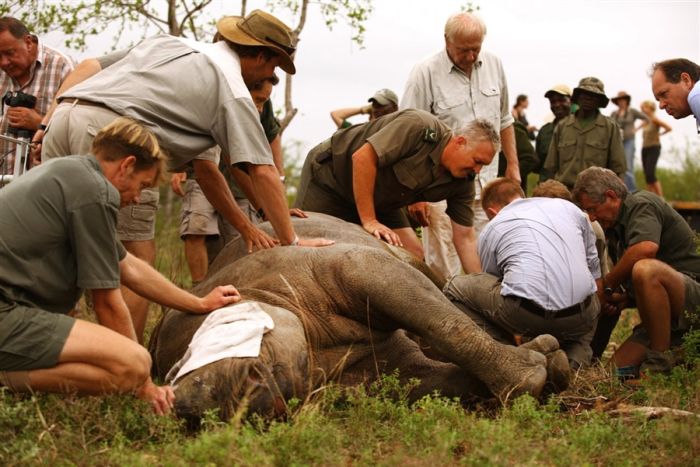|
|
Helicopter Transport Of 19 Black Rhinos To South Africa
|
The White Rhino has an immense body and large head, a short neck and broad chest. This rhino can exceed 3,500 kg (7,700 lb), have a head-and-body length of 3.5–4.6 m (11–15 ft) and a shoulder height of 1.8–2 m (5.9–6.6 ft) The record-sized White Rhinoceros was about 4,530 kg (10,000 lb). On its snout it has two horns. The front horn is larger than the other horn and averages 90 cm (35 in) in length and can reach 150 cm (59 in). The White Rhinoceros also has a prominent muscular hump that supports its relatively large head. The colour of this animal can range from yellowish brown to slate grey. Most of its body hair is found on the ear fringes and tail bristles with the rest distributed rather sparsely over the rest of the body. White Rhinos have the distinctive flat broad mouth which is used for grazing.
Black Rhinoceros
The name Black Rhinoceros (Diceros bicornis) was chosen to distinguish this species from the White Rhinoceros (Ceratotherium simum). This can be confusing, as those two species are not really distinguishable by colour. There are four subspecies of black rhino: South-central (Diceros bicornis minor), the most numerous, which once ranged from central Tanzania south through Zambia, Zimbabwe and Mozambique to northern and eastern South Africa; South-western (Diceros bicornis bicornis) which are better adapted to the arid and semi-arid savannas of Namibia, southern Angola, western Botswana and western South Africa; East African (Diceros bicornis michaeli), primarily in Tanzania; and West African (Diceros bicornis longipes) which was tentatively declared extinct in 2006.
|
|









